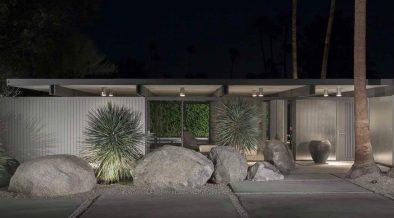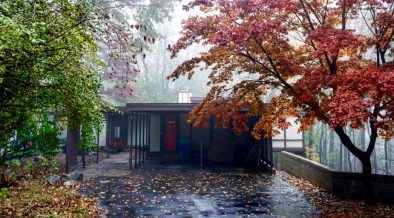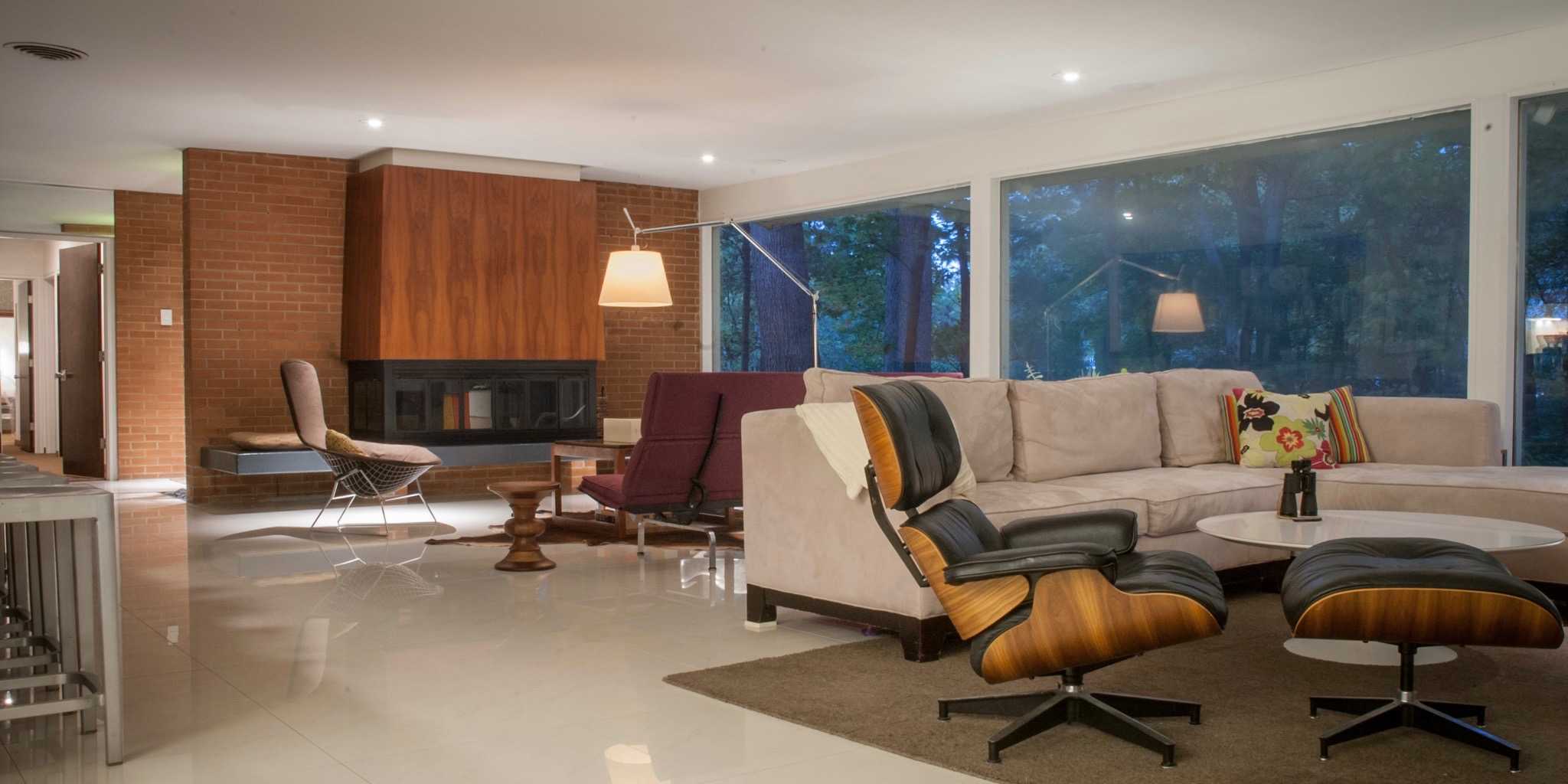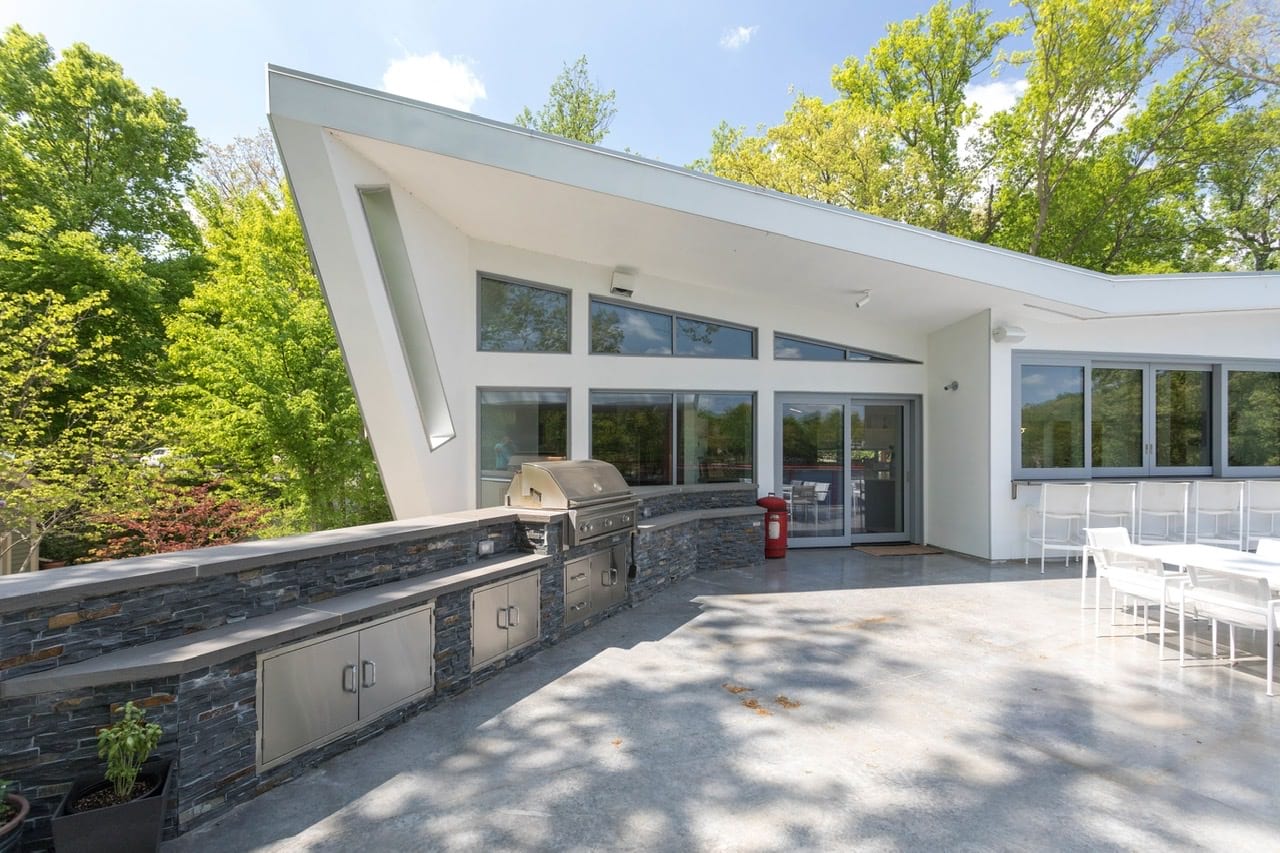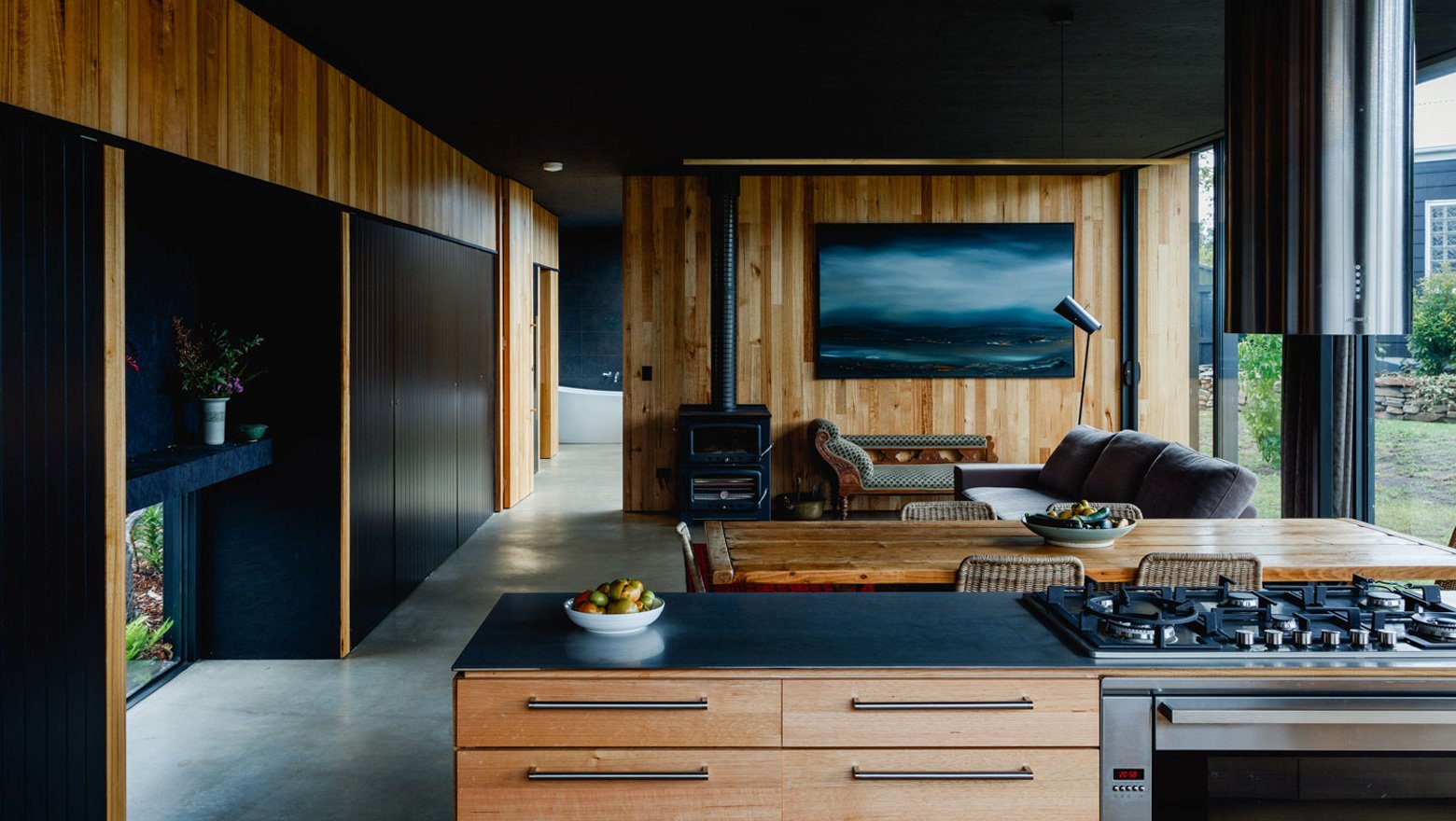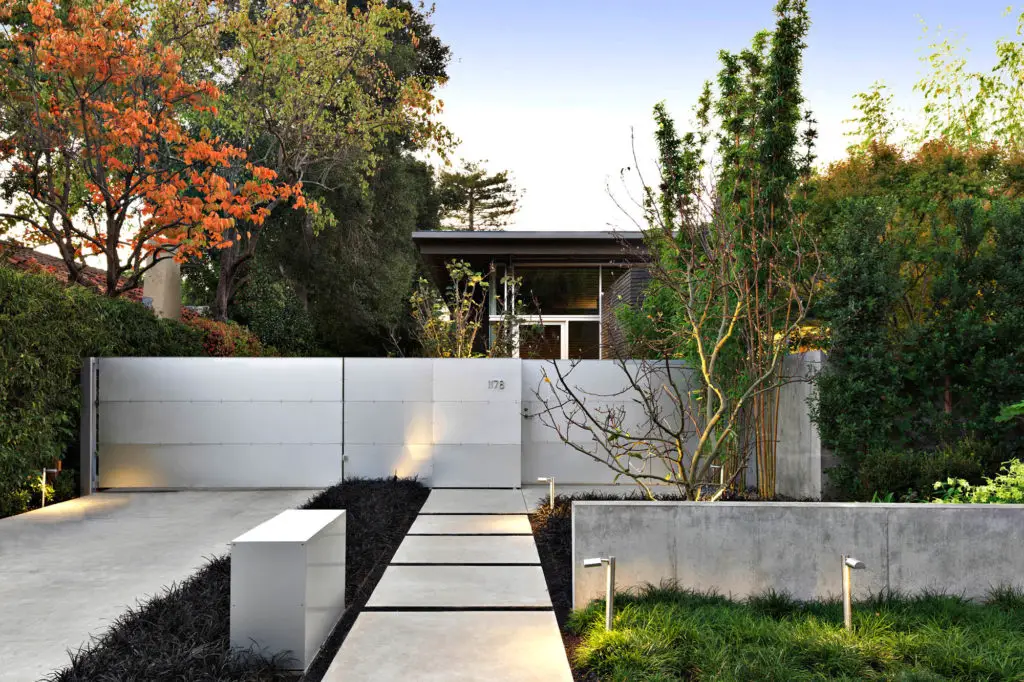
This modern home by Seattle Architecture firm Suyama Peterson Deguchi in Palo Alto, CA, is filled with light and air while enjoying a deep indoor/outdoor connection.
The home’s existing garden was rich with flowers and other plants, however, the homeowners wished for something more meditative; a serene private garden to disconnect. Today, San-Francisco based Landscape Architect Andrea Cochran talks us through her collaboration with architect George Suyama and the process of creating a calm, seamless design between architecture and landscape.
First of all, can you introduce yourself?
I am the founder of San Francisco based Andrea Cochran Landscape Architecture and have been practicing landscape architecture for over thirty years. My 16 person firm tackles a wide range of project types and scales, from single family residences to hotels, wineries, affordable housing, schools, institutions, and public parks.
Our work is internationally recognized, garnering numerous awards, including nine Honor Awards and two Awards of Excellence from the American Society of Landscape Architects and has been featured extensively in design publications as well as the New York Times and The Wall Street Journal. I hold a Masters of Landscape Architecture degree from Harvard University’s Graduate School of Design. In 2014, my firm was awarded Smithsonian’s Cooper-Hewitt National Design Award in Landscape Architecture and I was honored with ASLA’s Design Medal the same year.
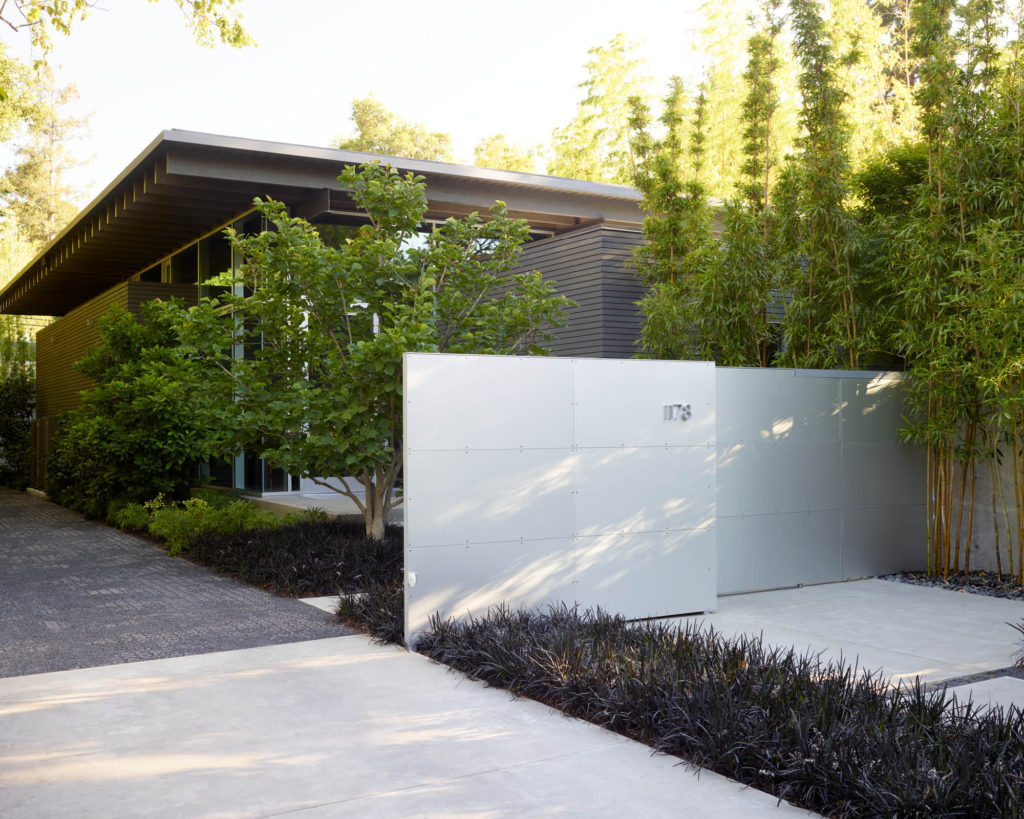
What was the overall vision – look, feel and functionality – for this landscaping project?
The clients had lived in a “cozy” 1930’s cottage in Palo Alto. They were looking to the next phase of their life as a retired couple with grown children, wanting to live primarily on one level.
The existing house was inwardly focused and had poor light. They loved their garden and they wanted a new home that would be open to the landscape and filled with light, air and connection to the outdoors. Because it was primarily on one level, the new house filled a larger footprint on the site and reduced the amount of garden space.
The existing garden was beautiful, overflowing with flowers and edible plants. They knew that the new site could not accommodate that type of garden anymore and they wanted to have a garden that was serene and meditative that totally screened the neighbors from day one.
The property is on a small lot close to downtown so there was not a tremendous amount of room for screening. Given that they wanted the house to open out onto the garden, carefully designing the spaces to feel private but also open was the main design challenge, along with maximizing every square inch of the lot to provide the greatest amount of landscape.
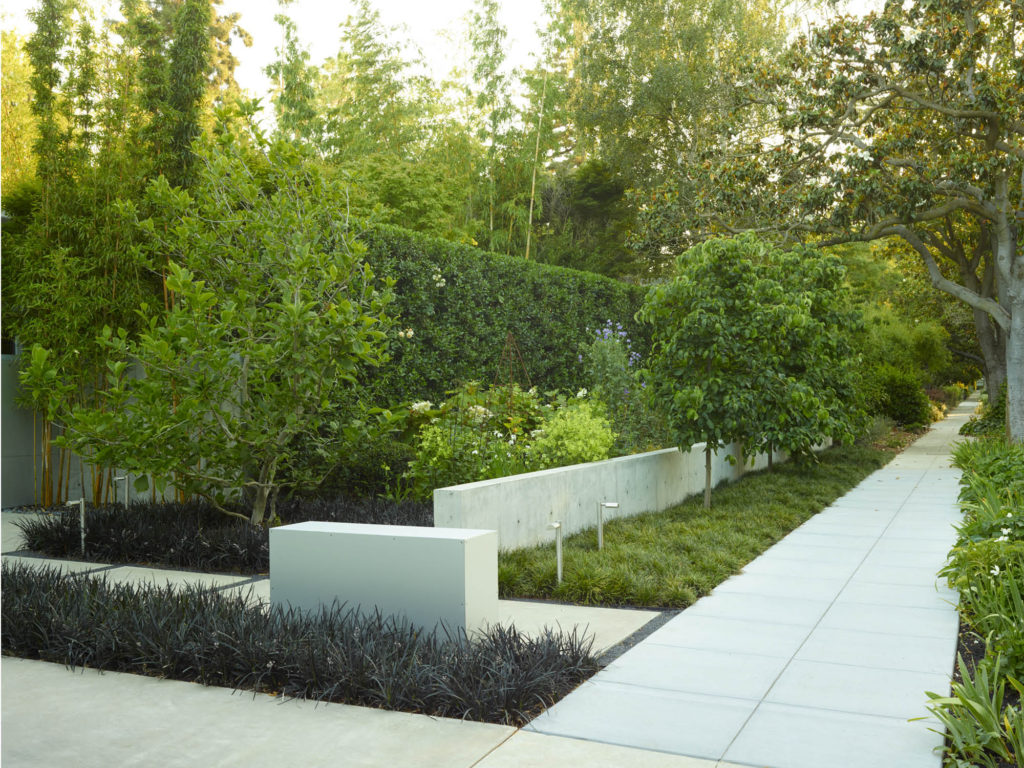
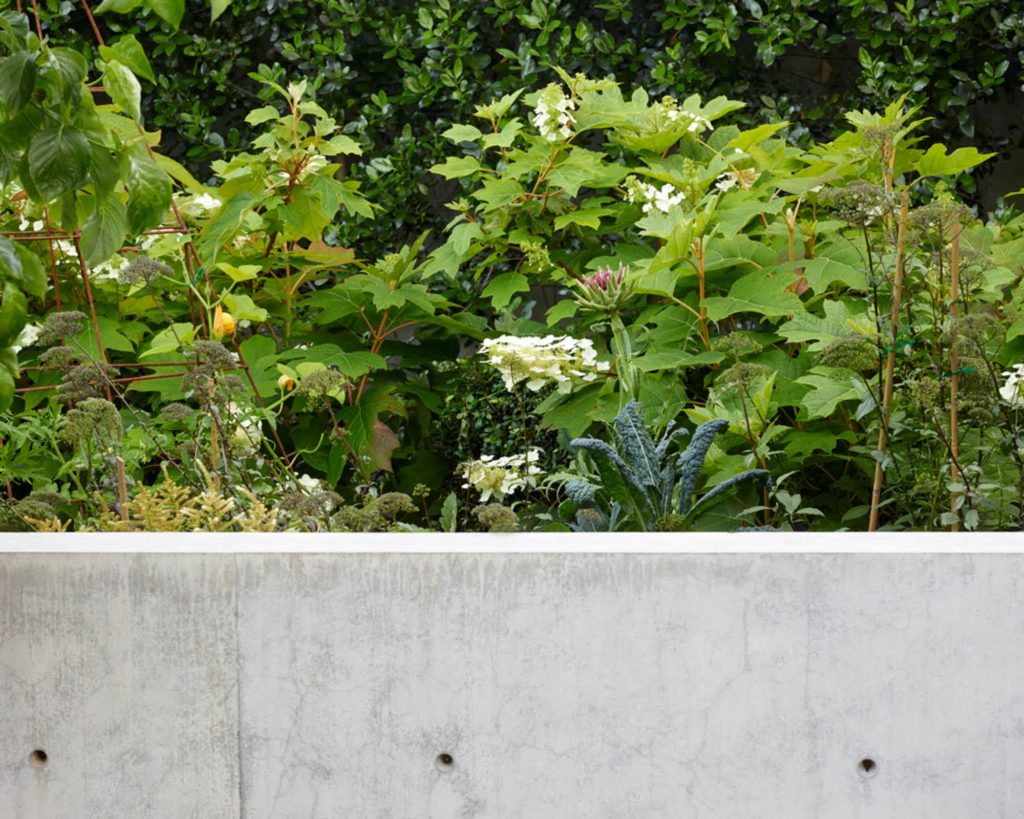
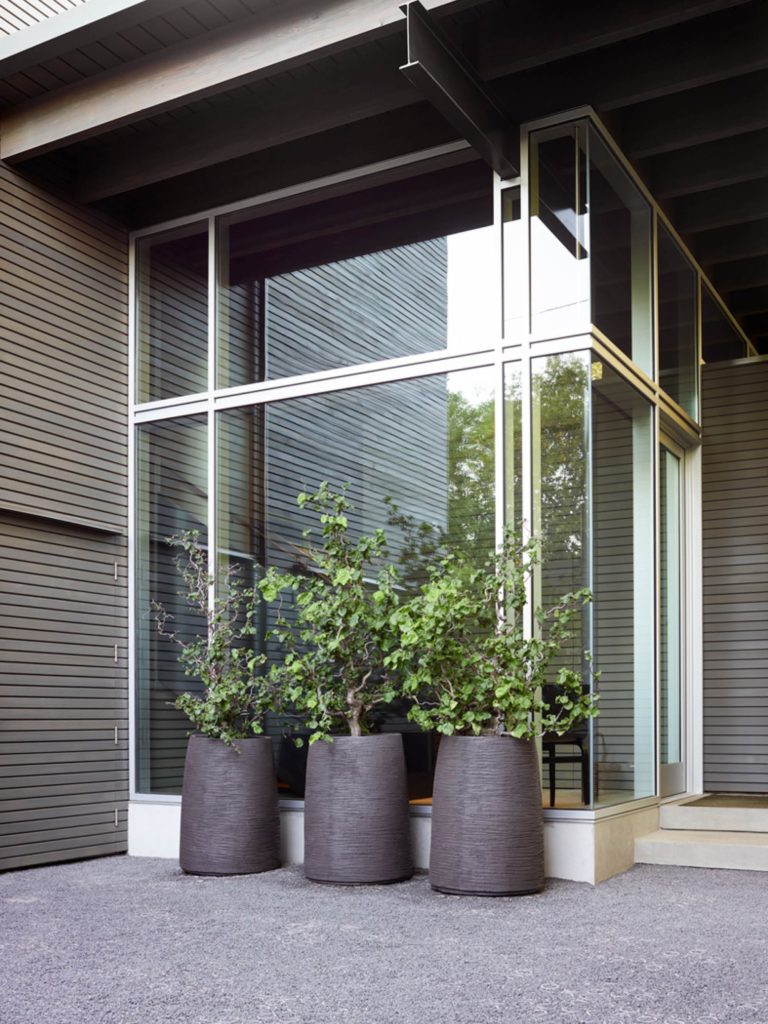
What inspired you during the project design process?
The architect, George Suyama of Peterson Suyama Deguchi grew up in the Pacific Northwest. As a Japanese American he was influenced by his ancestral culture and the integration of indoor–outdoor space, the compression and expansion of space, and the contrast of light and shadow. Our goal was to create a seamless design where architecture and landscape were completely integrated spatially and aesthetically.
In your opinion, how does this home celebrate the midcentury modern principle of integrating the outdoors with the indoors? What details were added to make spaces relate to one another?
A water feature extends from north to south bridging the three major courtyards of the house. The view from the main living space looking to the west is screened by a band of Giant Timber Bamboo that defines the outdoor perimeter of the property and serves as a backdrop to the water feature.
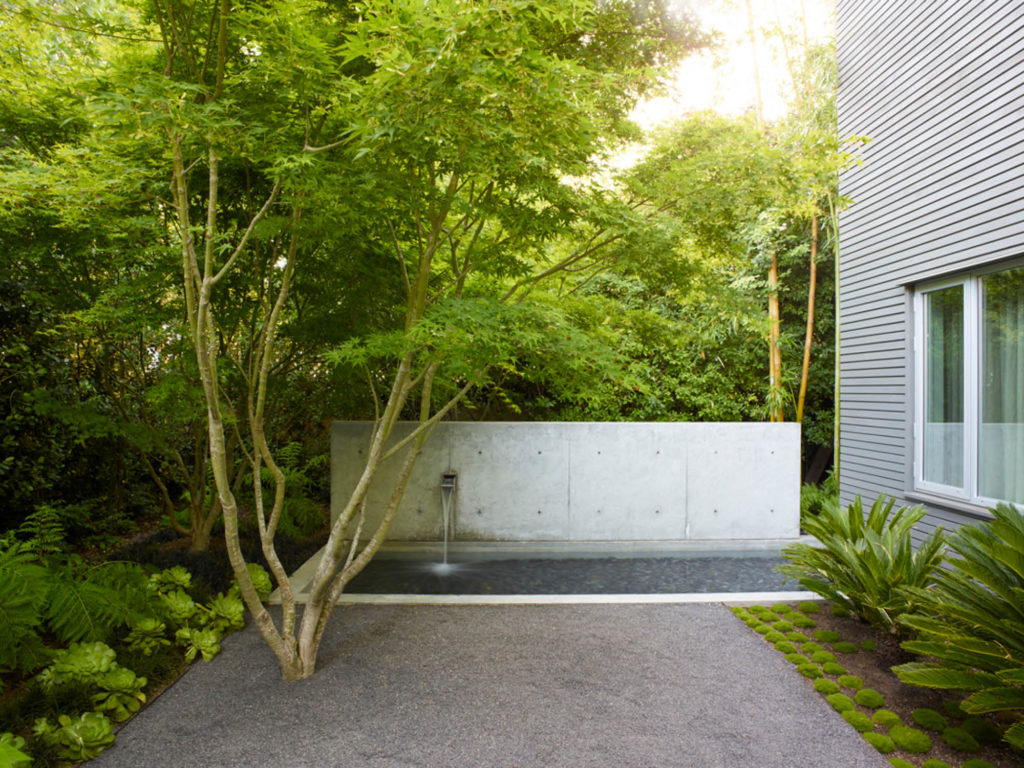
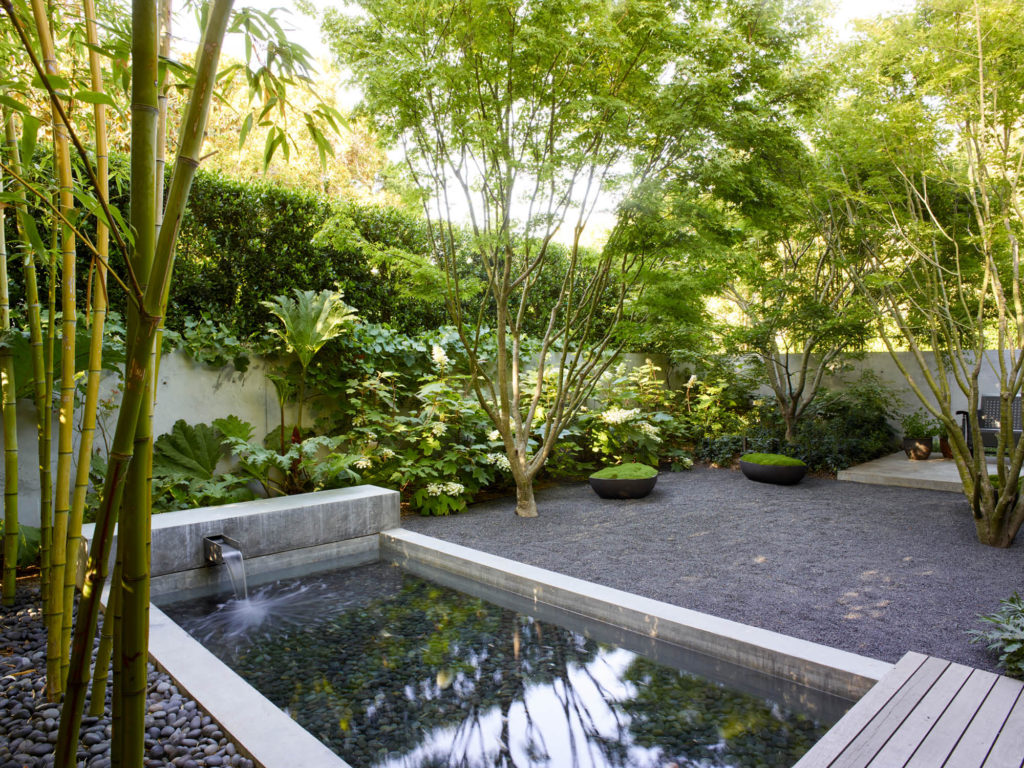
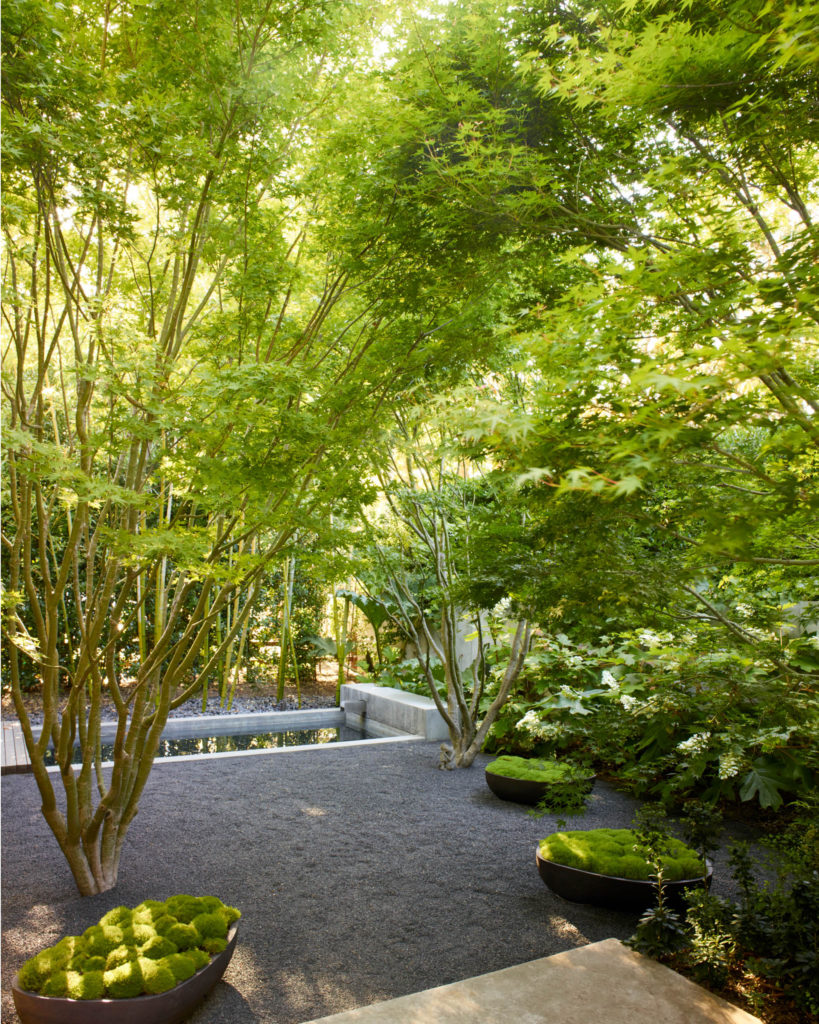
How does the landscaping tie in with the architecture of this home?
The landscaping is minimal but layered with shadows and textures that change throughout the day. The smaller courtyards on the north and south side of the house become outdoor rooms adjoining the bedrooms and office.
How does the landscaping fit into the surrounding natural environment?
The home is situated in the downtown area of a city south of San Francisco. The landscape is set in the urban context with a series walls providing privacy and layering. A low wall near the sidewalk defines a vegetable garden and the private space.
Locating the vegetable and cutting garden along the sidewalk alters a space that is normally not usable into a functional space for the clients and neighbors to enjoy. A second taller wall along with a hedge provides privacy and security for the interior gardens.
Which materials and plants were used and why?
The materials are honest, humble materials, such as concrete and gravel, following the expression of the house. The plant materials were chosen for their sculptural structure while providing greenery, carefully integrated flowers for seasonal interest, and edible plants such as citrus and herbs for the clients’ use.
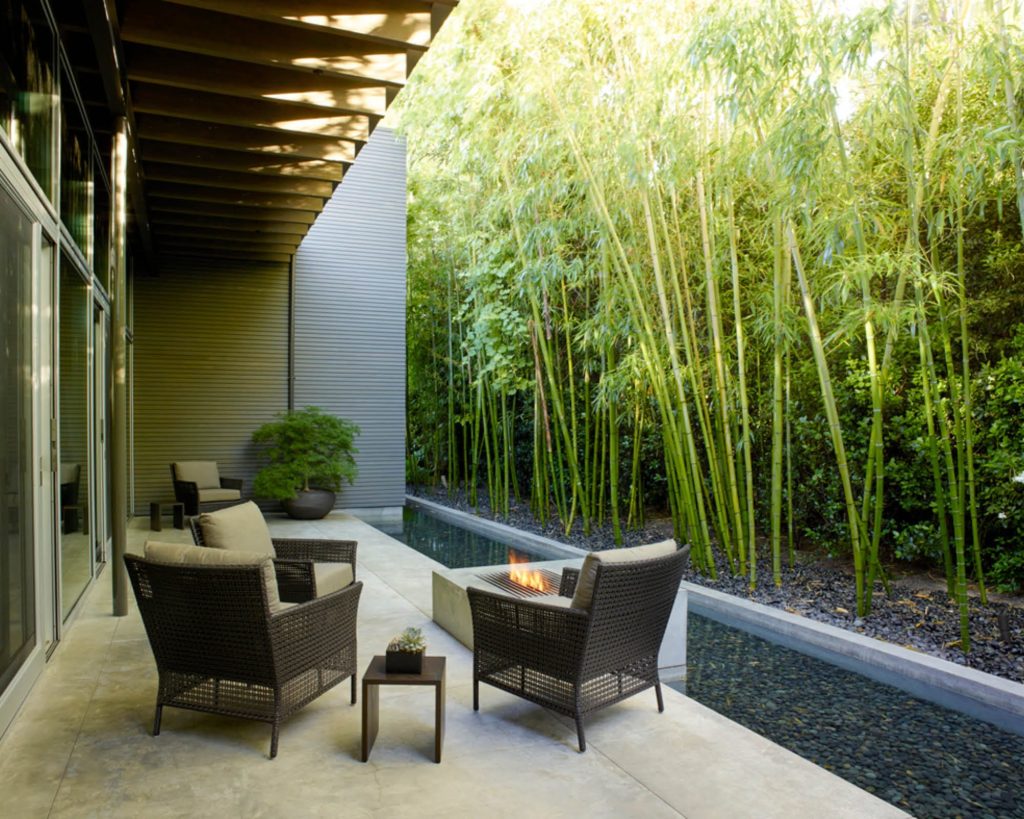
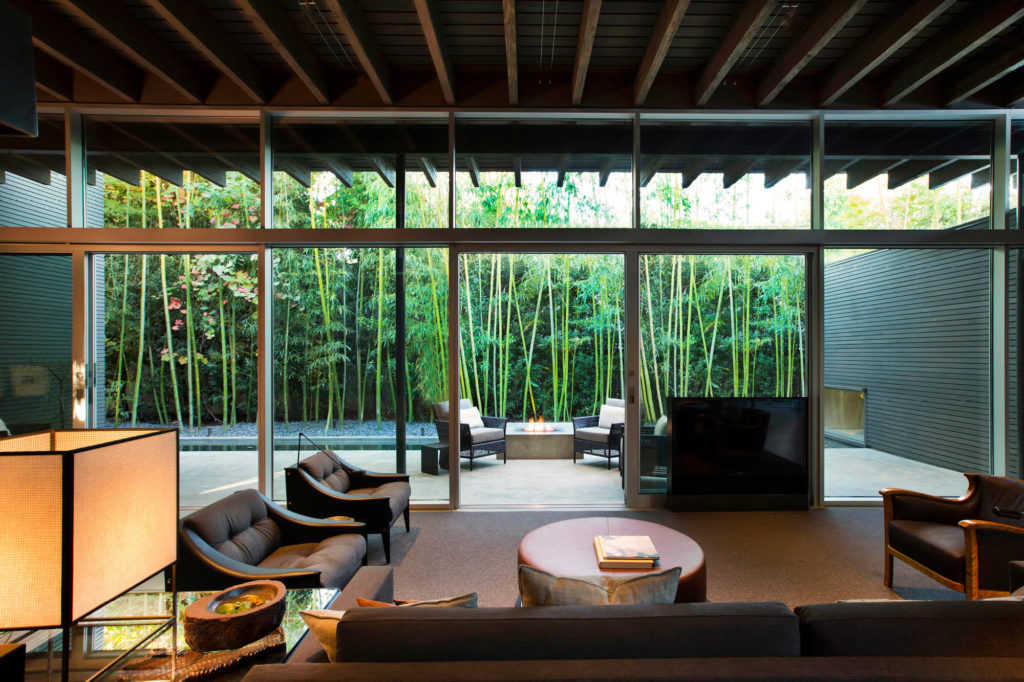
How long did the landscaping project last? Any major setbacks, and if so, what?
The entire project including building took about two years to build. It was a tight site so the landscape could not be installed until after the building was complete. Bamboo existing on the property was removed and replaced after construction so that it was large enough and full enough to provide the immediate screening the clients desired.
What is your favorite detail of the landscape and why?
I love looking from the living room over the water at the bamboo as a backdrop from the two story space. Because of the scale of it, you really feel like you are outside.
What advice/recommendations would you give to someone looking to renovate their yard?
It’s important to test ideas on the site because it can be difficult to visualize the scale of a design accurately, particularly in the landscape. We often mock-up our design on site, in order to get a realistic understanding of how it feels in the landscape.
I recommend marking out the size and location of spaces, plants, or other elements in the space. We have used materials like PVC pipe to envision how a tree will feel in the space and plywood to mock-up walls. Plans and inspiration images are not enough, you need to test things on site before building them.





